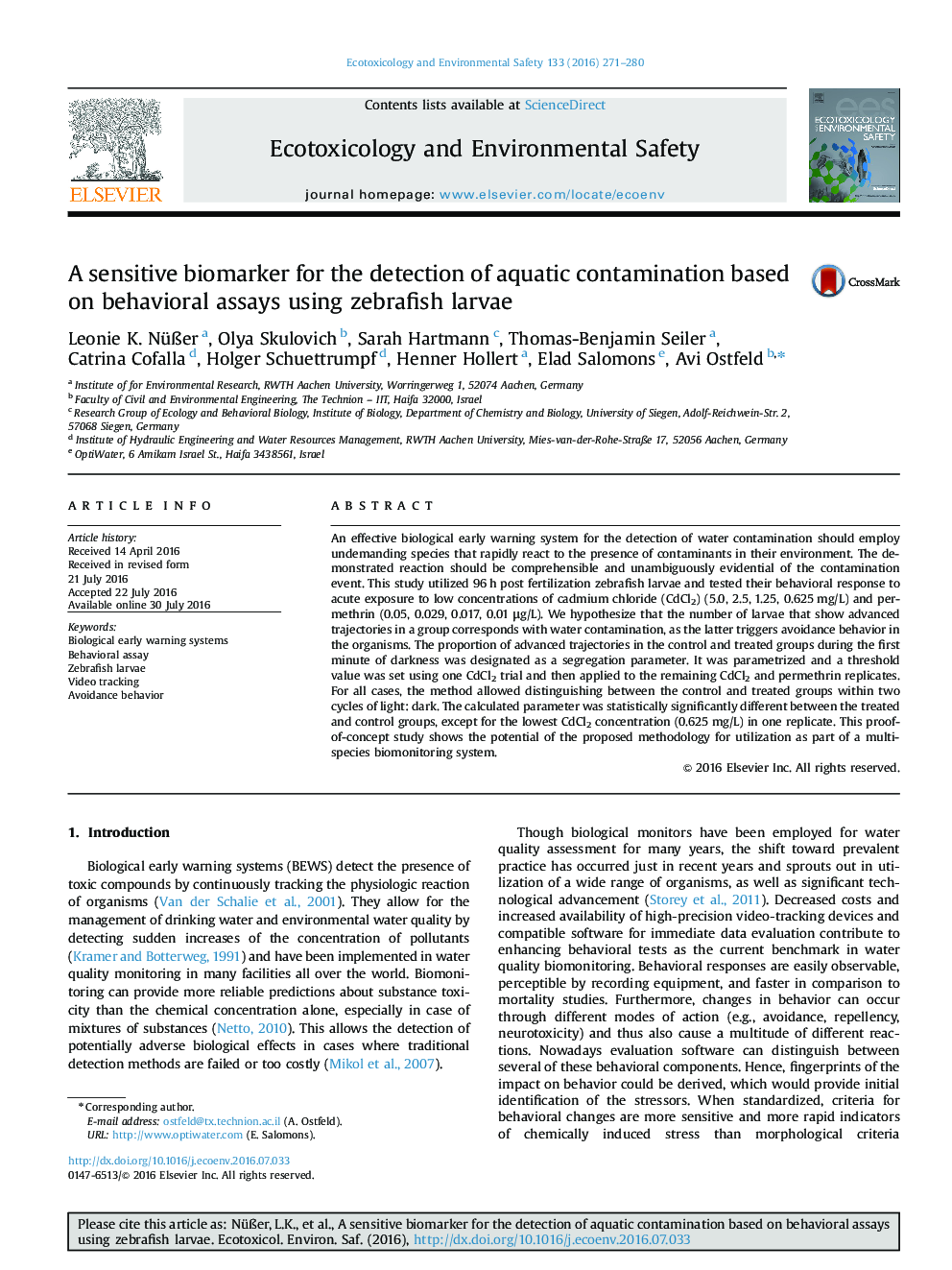| Article ID | Journal | Published Year | Pages | File Type |
|---|---|---|---|---|
| 4419016 | Ecotoxicology and Environmental Safety | 2016 | 10 Pages |
•Zebrafish larvae behavioral response to acute exposure of toxicants.•Treated group reacts to change in lighting exhibits avoidance behavior.•Parameterization distinct larvae overall and directed movement.•Larvae behavior demonstration for inclusion in biological sensors.
An effective biological early warning system for the detection of water contamination should employ undemanding species that rapidly react to the presence of contaminants in their environment. The demonstrated reaction should be comprehensible and unambiguously evidential of the contamination event. This study utilized 96 h post fertilization zebrafish larvae and tested their behavioral response to acute exposure to low concentrations of cadmium chloride (CdCl2) (5.0, 2.5, 1.25, 0.625 mg/L) and permethrin (0.05, 0.029, 0.017, 0.01 μg/L). We hypothesize that the number of larvae that show advanced trajectories in a group corresponds with water contamination, as the latter triggers avoidance behavior in the organisms. The proportion of advanced trajectories in the control and treated groups during the first minute of darkness was designated as a segregation parameter. It was parametrized and a threshold value was set using one CdCl2 trial and then applied to the remaining CdCl2 and permethrin replicates. For all cases, the method allowed distinguishing between the control and treated groups within two cycles of light: dark. The calculated parameter was statistically significantly different between the treated and control groups, except for the lowest CdCl2 concentration (0.625 mg/L) in one replicate. This proof-of-concept study shows the potential of the proposed methodology for utilization as part of a multispecies biomonitoring system.
Graphical abstractFigure optionsDownload full-size imageDownload as PowerPoint slide
